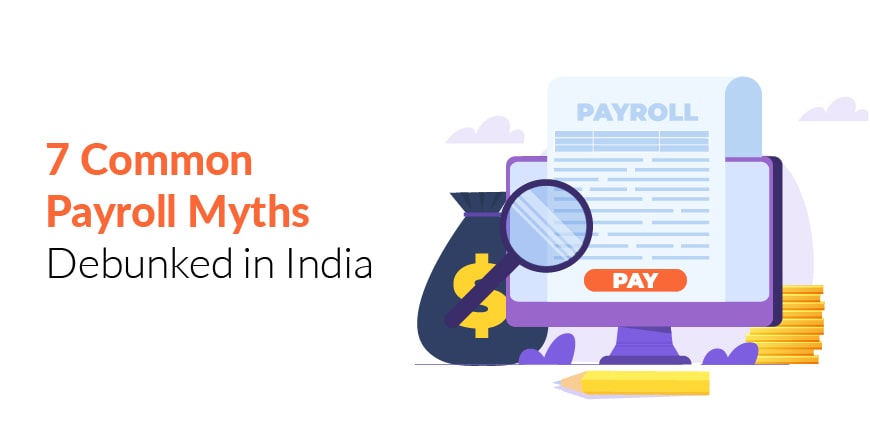
Top 5 HR Trends in Manufacturing Industry for 2025
06/12/2024
Top 8 Banking and Financial Technology Trends in 2025
08/12/2024Strong payroll performance reflects the stability and profitability of the organization itself. Payroll performance must not be a difficult thing to assess or track. This is where payroll metrics and analytics are very important. In this article we will define payroll metrics and analytics, understand their importance, and then go on to cover 11 common payroll metrics.
What Are Payroll Metrics?
The measures or metrics used to track and assess payroll performance are called payroll metrics. When a select few payroll performance metrics are taken to analyze the performance of payroll over a given period by decision-makers in the business, then they are referred to as payroll KPIs. Payroll metrics must all adhere to the SMART principle. This means they must be specific, measurable, achievable, realistic and time-based to be considered useful.
What Is Payroll Analytics?
Payroll analytics is the discipline of data analytics that analyzes the performance of payroll in a company by reviewing and analyzing the key payroll KPIs that matter. Payroll analytics can be used for understanding how payroll has evolved historically and even to predict future payroll performance, given other external factors that can affect the payroll process in a company. They also help ensure payroll compliance and lead to better workforce and financial management within the company, based on insights derived.
What Is the Importance of Payroll Metrics and Analytics?
Payroll metrics and analytics are crucial to understanding the performance of payroll in a company and by identifying any issues in payroll or compliance related to it, they can help with wealth and employee management. The employee engagement levels go up, which in turn leads to an increase in employee productivity.
How is it important financially? Observing the key payroll metrics and analytics ensures that the financial statement is accurate and gives stakeholders confidence that the company is doing well. It also helps assure the company that there is no case of accrued payroll and hence any additional liabilities for the company. If such liabilities exist, it could so easily lead to lawsuits and, as a result, penalties levied against the company.
What are the 11 Common Metrics in Payroll?
Let us now look at the important payroll performance metrics. We shall be looking at 11 such metrics and understanding their importance. All these metrics adhere to SMART.
1. Payroll Processing Time
It is important to track the amount of time spent on the payroll process, and at each stage of the payroll process, so the payroll team can analyze where and how to minimize the time taken during the process. If the time taken is too much, the business can opt for automating parts of the payroll process.
2. Payroll Accuracy
In this metric, the payroll team analyzes the overall accuracy of the payroll system. It looks at several things to get a better idea of accuracy. Some of the metrics that could be used are the number of mistakes in each cycle, the first-time approval rate, and the number of off-cycle payments that need to be processed by the payroll team.
3. Payroll Issue Resolution TAT
How long does it take for the payroll team to resolve an issue in payroll? The time taken from the moment of receipt of ticket to the time and date of resolution is the Payroll Issue Resolution TAT and gives a good idea of not only the complexity of the issue but the overall expertise of the payroll team itself. Maybe you need to hire fresh payroll talent?
4. Payroll Cost
What is the cost of maintaining the payroll in the company? This includes cost of hires in the team, cost of payroll management software, other associated costs such as the cost of mistakes committed during the payroll process etc. or the costs of outsourcing the payroll to an external team or payroll service agency.
5. Cost of Training
Whether it is for a new employee or a person who is being transferred to a different process, there will be training before the work begins. The cost of such training also becomes a liability in the payroll statement, one that they cannot retrieve from the employee.
6. Leaves Availed (Paid/Unpaid)
What is the total number of leaves taken, both paid and unpaid? How many leaves are still available? Were any leaves taken on declared holidays? By factoring these in, it is possible to arrive at the accurate pay for everyone, without leaves becoming a reason for mistakes in payroll.
7. Hours Worked
How many hours has each employee worked? What is the duration of time for which the employee is supposed to work? Is there any attendance tracking software at work and were any errors reported in them? These are some of the questions you must ask while calculating actual work hours for each employee.
8. Compliance Score
No payroll process is perfect. So, clearly there will be errors. How many errors have been made in payroll compliance in a given cycle or over the year? Maintain a compliance score based on this and the severity of the error committed in compliance, based on the cost to the company because of it.
9. Overtime
How much overtime has the employee worked for? What is the additional pay due to the employee based on the rules for overtime and the employee category? This metric gives an idea again of payroll accruals related to overtime, if the payments are not made immediately.
10. Employee Turnover
How many employees have left the company since the payroll cycle began? Are there any salaries that must be adjusted, especially for employees who have left the company? These are some of the questions you must ask when you are looking at this metric and running analytics.
11. Employee Net Promoter Score
How have the employees described the company’s payroll process in surveys sent out to them? Do they find it timely and accurate? Do they feel that any doubts they have regarding the process are addressed early enough? Assign a net promoter score based on these explorations.
Are You Looking for A Payroll Service Partner?
Those payroll metrics are useful, aren’t they? But let’s not stop there, because you may still have doubts on how to get the payroll process right. Alp Consulting, with over two decades of experience in payroll and compliance, wants to help you get the payroll process right. Talk to us today and let us discuss how we may be of assistance.
Frequently Asked Questions
1. What is a payroll metric?
A measurable data point used to track and assess the performance of a company’s payroll is called a payroll metric. It helps businesses ensure employees are paid on time and even find ways to improve the business financially.
2. Who manages payroll in a company?
The payroll in a company could sometimes be managed by the HR or the accounting team, especially if the company is small. But ideally, there must be a separate team dedicated to payroll management. If you do not have the bandwidth to maintain a team, outsource payroll.
3. What is the basic formula for payroll?
The basic formula for payroll is Net Pay = Gross Pay – Deductions. The gross pay must be as mentioned in the offer made to the candidate and the deductions as updated based on which tax slab the amount falls into.
4. What is payroll data in HR?
Payroll data in HR includes all the relevant information of employees that must be collected to ensure that the payroll is processed correctly. This includes employee salary, all deductions, other benefits etc.
5. What does KPI mean in payroll?
KPI stands for key performance indicator. The metrics in payroll that are relevant to decision-makers and used by the company to manage employee well-being and financial growth, by monitoring and taking corrective measures on the payroll process, are referred to as payroll KPIs.
Contact Us For Business Enquiry

Yugandhara V. M
Yugandhara V. M serves as the Assistant Vice President – HRO at Alp Consulting Ltd., bringing over 14 years of rich experience in Human Resource Outsourcing, payroll management, and statutory compliance. He specializes in driving process excellence across HR operations, ensuring seamless service delivery and compliance with labor laws. Yugandhara’s expertise lies in managing large-scale client engagements, optimizing HR processes, and implementing efficient workforce management systems that enhance organizational performance. He also leads comprehensive payroll services, ensuring accuracy, timeliness, and compliance for diverse client portfolios.




